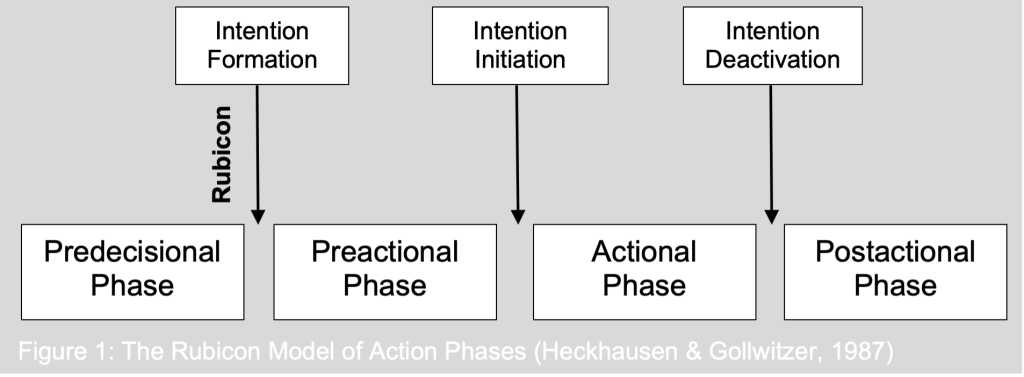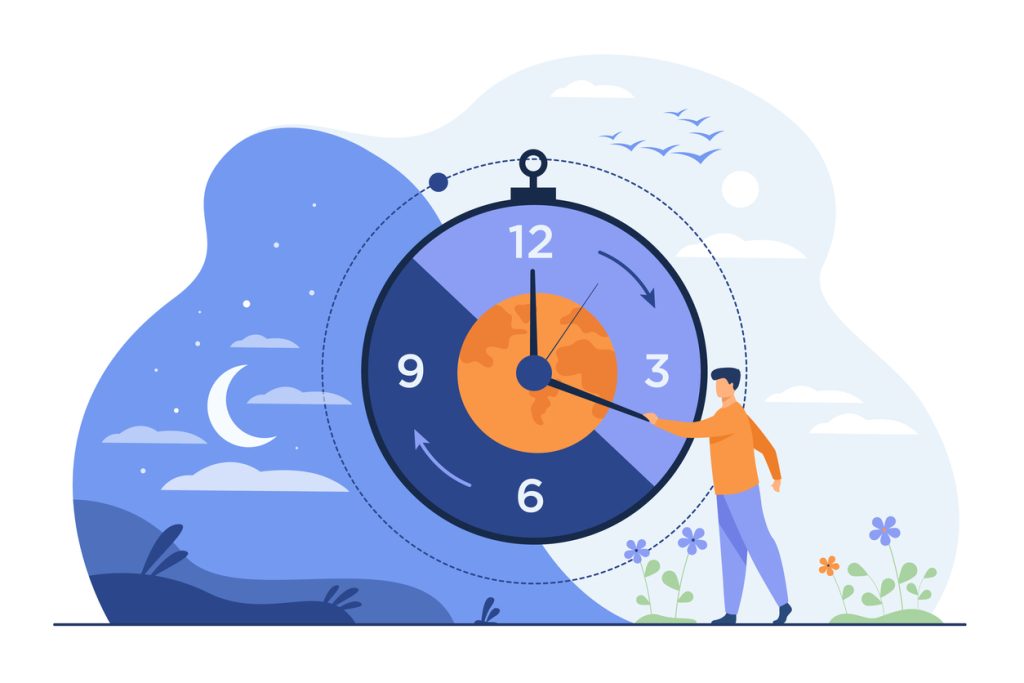Yes, your employees are still burned out. Here’s what you can do about it
Solutions to support struggling workers must go beyond self-care
Jodi Tingling
 The past few years have been stressful, to say the least. We have had to navigate numerous challenges including but not limited to working through a pandemic while managing multiple responsibilities, witnessing and protesting social justice issues that continue to have a negative impact on disadvantaged groups and losing loved ones. The psychological impact of these stressors has tested us in many ways.
The past few years have been stressful, to say the least. We have had to navigate numerous challenges including but not limited to working through a pandemic while managing multiple responsibilities, witnessing and protesting social justice issues that continue to have a negative impact on disadvantaged groups and losing loved ones. The psychological impact of these stressors has tested us in many ways.
For most organizations, it may be back to business as usual. However, according to the Canadian Mental Health Association, one in four Canadians has accessed support for mental health challenges and their levels of mental health distress are similar to the start of the pandemic. This suggests the pandemic could have lasting effects on individual well-being, requiring ongoing mental health support.
The typical advice employers give to employees who are feeling stressed and burned out is to take care of their mental health, access counselling, engage in self-care and take vacation days. This advice is not enough. Employees simply can’t self-care their stress away. We must address the systems that enable stress and burnout to continue to harm our people.
So, as leaders, how do we move beyond superficial advice to help support the mental health journey of our team members?
Get flexible
The first challenge we can address is encouraging or supporting team members to have a more balanced life. One of the positive aspects to come out of working during a pandemic was the fact that many companies were able to move to a work-from-home option. A study by Statistics Canada indicated 90% of people who worked from home reported they accomplished as much work at home as they did in the office. This gave employees the chance to prove that their success can’t be measured by the hours they spend in the office, but rather by their ability to get the job done. Working remotely also helped increase employee happiness by as much as 20%, while returning to work and dealing with long commute times decreases happiness, according to a June 2022 study from Tracking Happiness.
“Employees simply can’t self-care their stress away. We must address the systems that enable stress and burnout to continue to harm our people.”
When we think about work-life balance, the ability to work remotely and have a flexible schedule can significantly impact the life of your employees and help bring more balance to their lives. If you are a people leader, think about areas where you can offer these options. This can help reduce some of the stress employees are experiencing when they come to work.
More from the author
How career practitioners can continue to challenge oppressive systems
Supporting the careers of individuals who are Black, Indigenous and people of colour
Be proactive
Another area to consider when you are trying to help your team manage their stress is not waiting to act until employees are burned out and need to take a stress leave. This is a reactive approach.
To be proactive, all people leaders need to engage in professional development around recognizing the signs of stress and burnout. Tuning into your employees’ changing needs and finding a way to help accommodate them can shift their experience from entering a state of burnout to feeling supported in their mental health.
The website Workplace Strategies For Mental Health has some great tips for recognizing signs of burnout in your employees. It outlines actions leaders can take including assessing employees’ workloads, setting realistic expectations and giving high-achievers choices. Leaders and employees may also be able to access training options through a company Employee Assistance Program (EAP).
In addition to professional development, leaders can conduct weekly check-ins with reports, note changes in behaviours or attitudes and provide opportunities for professional development or stretch projects (if employees express the need for a change) to help prevent burnout. When we can anticipate our team’s needs, this can help us to uplift and empower them, especially in challenging times.

Create a safe space
If you want your employees to let you in on what they are experiencing, you must create a psychologically safe work environment. According to the Center for Creative Leadership, psychological safety occurs when team members feel comfortable being themselves, including speaking up, disagreeing with the status quo and embracing respectful conflict.
As people leaders, it’s important to assess where you stand on fostering a psychologically safe environment at work. You can ask yourself:
- Do your team members speak up in meetings?
- Do your reports open up to you when you check in on them or do you get surface-level interactions?
- Do you notice team members tend to agree with mostly everything you say?
A McKinsey & Company study found that organizations that invest in leadership training see an increase in psychological safety. When leaders commit to continuing to build their leadership skills – especially in the domains of emotional intelligence and creating an inclusive environment – this can create a safe space for employees to speak up when they are feeling overloaded, stressed or in need of accommodations. This is an important factor for preventing burnout and creating protective factors.
Courses such as Amy Edmondson’s Psychological Safety: Clear Blocks to Innovation, Collaboration, and Risk-Taking and Anima Leadership’s Authentic Management – Leading Diverse, High Performance Teams are excellent places to start building your skills in the domain of psychological safety.
Take a systems approach
Lastly, burnout can be caused by the workplace systems that keep employees overworked and often underpaid. Consider updating policies that may be causing your team more harm than good. Whether it’s introducing a remote work or diversity, equity and inclusion policy; updating compensation packages; or simply pointing out when policies don’t seem fair, these systems-level considerations can help improve the day-to-day experiences of employees.
If you have spoken up, but you and your team must abide by these policies, what can you do in your power to make a difference? For example, can you show flexibility in areas such as work hours, re-distributing workload, advocating for your employee’s needs, listening or looking out for professional development opportunities that can help your team grow?
As a leader you can also lead by example and model taking care of yourself. And encourage other leaders you connect with to do the same. No longer is working 10-hour days perceived as a badge of honour; rather, it’s seen as a recipe for burnout. When your team sees you modelling the behaviour you want to see in them as well as encouraging other leaders to do the same, this can create a culture of wellness.
In summary, employees are still feeling stressed and burned out. As a leader, you can make a difference. You can work with your team to create more balance through work-from-home options or flexibility in scheduling. You can also take a proactive approach by investing in your own professional development as a leader to recognize the signs of stress and burnout on your team and have strategies in place to minimize the effects. Creating a psychologically safe work environment is also essential for your team to speak up when they need help or accommodations in the workplace. And finally, continue to challenge the systems that can cause your employees harm, find workarounds that minimize the stress your team feels and model the behaviour you’d like to see on your team.
Jodi Tingling is a Licensed Therapist in Ontario and Wellness Coach. She provides wellness training for organizations and helps high-achieving professionals navigate stress in the workplace (including impostor syndrome, toxic workplaces and creating balance). To learn more about her work check her out here: www.creatingnewsteps.com.


 Julian is a Canadian professional soccer player whose career goal is to get into a European club. During the COVID-19 pandemic, he felt the constant stress of having to isolate when a team member was sick and started feeling disenchanted about having to play without an audience. Things are more “normal” now, but he has not been performing well and has suffered repeated injuries. Thus, he gets anxious about his performance and career goal. He often ruminates about his mistakes and wonders whether he should disengage from his goal or not. He is experiencing a career action crisis.
Julian is a Canadian professional soccer player whose career goal is to get into a European club. During the COVID-19 pandemic, he felt the constant stress of having to isolate when a team member was sick and started feeling disenchanted about having to play without an audience. Things are more “normal” now, but he has not been performing well and has suffered repeated injuries. Thus, he gets anxious about his performance and career goal. He often ruminates about his mistakes and wonders whether he should disengage from his goal or not. He is experiencing a career action crisis.


 In 2020, CERIC released a series of
In 2020, CERIC released a series of 

 I was first introduced to the concept of bullying in the workplace in 2010 during my graduate course in Career Psychology. I realized that although bullying has been a workplace issue for many years, it has received very little attention in the Canadian context. Nevertheless, as a Career Counsellor in private practice, I have often heard clients share stories that highlight clear instances of this issue.
I was first introduced to the concept of bullying in the workplace in 2010 during my graduate course in Career Psychology. I realized that although bullying has been a workplace issue for many years, it has received very little attention in the Canadian context. Nevertheless, as a Career Counsellor in private practice, I have often heard clients share stories that highlight clear instances of this issue.
 No prom, no graduation, no high school plays. It’s no surprise to anyone that students who graduated in 2022 did not have a normal high school experience; their only non-pandemic high school year was Grade 9. They have missed out on experiential learning opportunities like sporting events, school plays, international trips, part-time work and summer jobs. While this is showing up on resumes as lack of experience, it is also showing up in a variety of other deficits such as confidence, optimism for their future and understanding the full range of opportunities that lie ahead of them.
No prom, no graduation, no high school plays. It’s no surprise to anyone that students who graduated in 2022 did not have a normal high school experience; their only non-pandemic high school year was Grade 9. They have missed out on experiential learning opportunities like sporting events, school plays, international trips, part-time work and summer jobs. While this is showing up on resumes as lack of experience, it is also showing up in a variety of other deficits such as confidence, optimism for their future and understanding the full range of opportunities that lie ahead of them.

 Organizations are asking employees to return to the office and a “new normal” workplace. However, while some employees are eager to separate work from home, not all are keen to return to the office full time. As businesses implement new working models from fully remote to strictly office-based, and everything in between, career professionals need to be prepared to support clients to consider what meets their needs.
Organizations are asking employees to return to the office and a “new normal” workplace. However, while some employees are eager to separate work from home, not all are keen to return to the office full time. As businesses implement new working models from fully remote to strictly office-based, and everything in between, career professionals need to be prepared to support clients to consider what meets their needs.
 The career decision-making process is complex. It does, after all, require an individual to choose a career that will make up a significant part of their life. While some people rely primarily on their rationality, others are chiefly guided by their intuition, while others still rely mostly on their emotions.
The career decision-making process is complex. It does, after all, require an individual to choose a career that will make up a significant part of their life. While some people rely primarily on their rationality, others are chiefly guided by their intuition, while others still rely mostly on their emotions.
 The COVID-19 pandemic has had a
The COVID-19 pandemic has had a 

 Compassion fatigue is now widely recognized as an occupational hazard for those careers that are dubbed “the helping professions,” such as nurses, police officers and lawyers. People working in career development, such as employment counsellors and vocational rehabilitation professionals, are also part of this group. Job title notwithstanding, compassion fatigue is a risk for professionals whose jobs require empathizing with another person requiring help, in order to provide competent and effective care.
Compassion fatigue is now widely recognized as an occupational hazard for those careers that are dubbed “the helping professions,” such as nurses, police officers and lawyers. People working in career development, such as employment counsellors and vocational rehabilitation professionals, are also part of this group. Job title notwithstanding, compassion fatigue is a risk for professionals whose jobs require empathizing with another person requiring help, in order to provide competent and effective care.

 As an occupational therapist working in the employment sector, I have witnessed the significant impact of the pandemic on employees and jobseekers.
As an occupational therapist working in the employment sector, I have witnessed the significant impact of the pandemic on employees and jobseekers. 